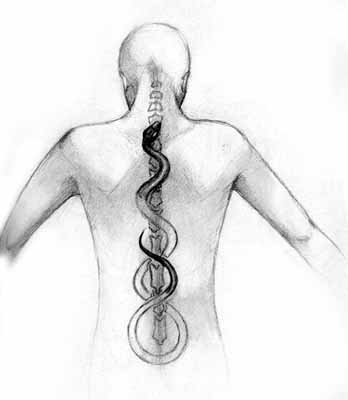Saturday, 6 August 2011
kundalini
Kundalini (kuṇḍalinī, Sanskrit: कुण्डलिनी, Thai: กุณฺฑลินี) literally means coiled. In yoga, a "corporeal energy" - an unconscious, instinctive or libidinal force or Shakti, lies coiled at the base of the spine. It is envisioned either as a goddess or else as a sleeping serpent, hence a number of English renderings of the term such as 'serpent power'. The kundalini resides in the sacrum bone in three and a half coils and has been described as a residual power of pure desire.
Kundalini is described as a sleeping, dormant potential force in the human organism.[6] It is one of the components of an esoteric description of man's 'subtle body', which consists of nadis (energy channels), chakras (psychic centres), prana (subtle energy), and bindu (drops of essence).
Kundalini is described[who?] as being coiled up at the base of the spine, usually within muladhara chakra. The image given[who?] is that of a serpent coiled three and a half times around a smokey grey lingam. Each coil is said[who?] to represent one of the three gunas, with the half coil signifying transcendence.
Through meditation, and various esoteric practices, such as kundalini yoga, laya-yoga, and kriya yoga, the kundalini is awakened, and can rise up through the central nadi, called sushumna, that rises up inside or alongside the spine. The progress of kundalini through the different chakras leads to different levels of awakening and mystical experience, until the kundalini finally reaches the top of the head, Sahasrara chakra, producing an extremely profound mystical experience.
[http://en.wikipedia.org/wiki/Kundalini]
Subscribe to:
Post Comments (Atom)






0 comments:
Post a Comment